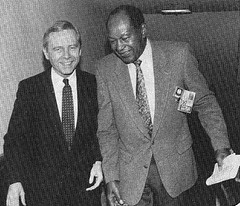 Democratic Senator wants to spend more time with family
Democratic Senator wants to spend more time with family
by Brian Leubitz
Michael Rubio was first elected to the Senate in 2010, and it looks like he won’t finish that term to its completion next year. He announced that he will be joining Chevron in its California governmental affairs department.
Rubio, citing the desire to spend more time with his family and a young daughter with special needs, “realized that my current professional path has left little opportunity to be home for those who are most important to me, which is why I am making a change.”
“My wife and I have been blessed with two beautiful daughters, from whom we have learned a great deal,” he said. “Our youngest child, who has special needs, has given me great perspective as to life’s priorities and our eldest has reminded me that the most critical decisions are made at home and not under the Capitol dome.”
The governor will call a special election shortly to fill the Democratic-leaning seat, which has an 18point D registration advantage. However, as Rubio was the chair of the Environmental Quality Committee and a leader on CEQA reform, the move could change the complexion of how we will change our environmental quality laws. As the most moderate of the Senate’s Mod Squad, his absence from the chamber could change the caucus to the left somewhat, even given the temporarily smaller majority.
UPDATE: One quick note, Anthony York points out that the special will be for the old 2010 district, the election in 2014 will be for the new district.
Special election fun fact! Race to replace @michaelrubio will be in old SD16, which has been redrawn. Reelect would be in new SD14 in 2014.
— Anthony York (@AnthonyYorkLAT) February 22, 2013

